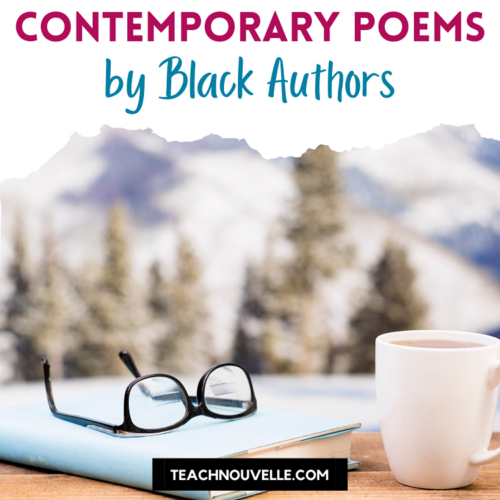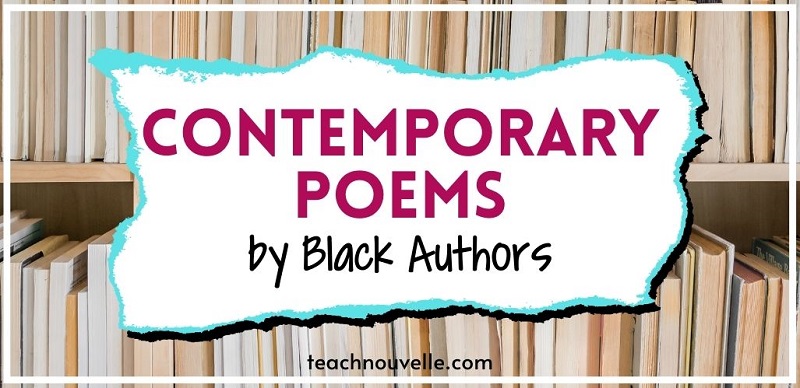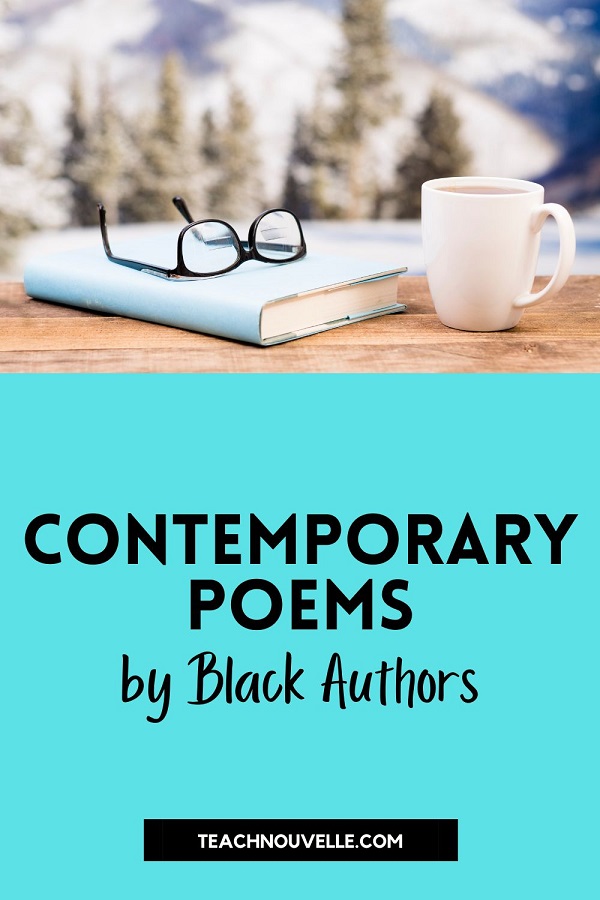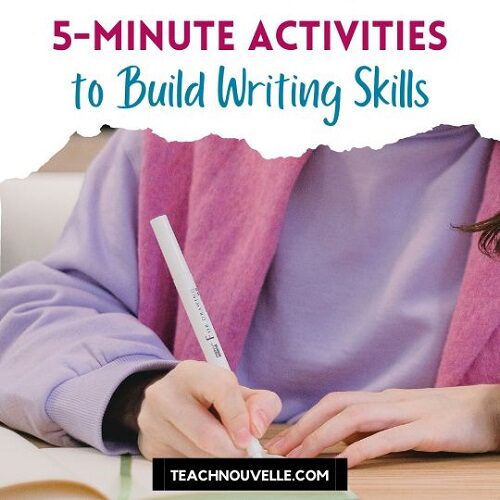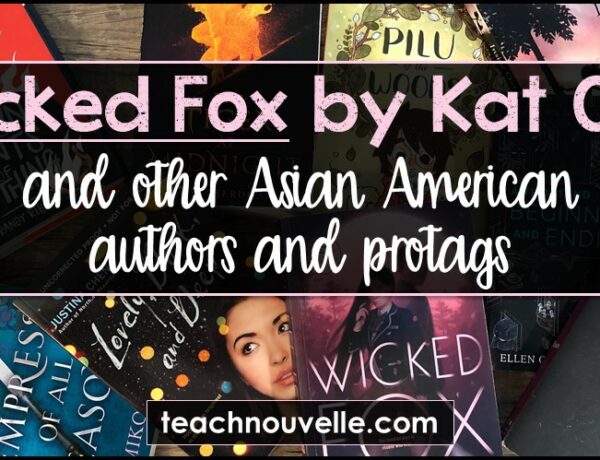These contemporary poems by Black authors will help diversify your poetry unit, help students process current events, and even help engage reluctant poetry readers.
Listen y’all, I’m not hating on the classics! Groundbreaking and hugely influential Black poets like Gwendolyn Brooks, Paul Laurence Dunbar, Maya Angelou, Langston Hughes, etc. all deserve a place in the ELA curriculum.
However, it’s not enough for us to only teach the classics, especially when it comes to poetry. It’s easy for students to feel like poetry is “boring” or irrelevant, so today, I’m sharing seven contemporary poems by Black authors to help your students connect with the voices and experiences of their peers, not their grandparents.
Contemporary Poems by Black Authors:
“In This Place (An American Lyric)” by Amanda Gorman
“There’s a place where this poem dwells—
it is here, it is now, in the yellow song of dawn’s bell
where we write an American lyric
we are just beginning to tell.”
Amanda Gorman bust into our collective consciousness when she recited her poem, “The Hill We Climb” at President Joe Biden’s inauguration in January of 2021. But I am even more captivated by the imagery of “In This Place.”
A poem of vignettes, from Charlottesville, where “tiki torches string a ring of flame, tight round the wrist of night” to California, where “where my friend Rosa …knows hope is like a stubborn ship gripping a dock.”
Listen to Gorman read 5 more of her poems here. Whatever poem you choose, Gorman deserves a place in every classroom.
Garden of Eden by Tracy K. Smith
This poem is short but incredibly descriptive. I especially love the imagery created when describing the market where our narrator is shopping,
“The glossy pastries!
Pomegranate, persimmon, quince!
Once, a bag of black beluga
Lentils spilt a trail behind me
While I labored to find
A tea they refused to carry.”
This contemporary poem could fit into any poetry unit and would be a great choice to replace a poem by a DWG (that’s, Dead White Guy).
“alternate names for black boys” and “juxtaposing the black boy and the bullet” by Danez Smith
I couldn’t choose between these two compelling poems by Danez Smith, so I included them both. Danez first gained notoriety for his poem “Dear White America” when his reading of it went viral. (If you aren’t familiar with it, stop reading now and listen.)
His, and other contemporary poems, would be excellent texts for a social justice lit circle. I would recommend being very intentional with the way you present his works. Keep in mind that they could be potentially triggering for some Black and brown students, and it’s important to set the expectations for having a respectful classroom discussion before presenting sensitive materials.
I talk more about this in my post, Teaching Social Justice in ELA, here’s an example:
“Students will probably have some powerful reactions to the content. Black and POC students might feel triggered, and White students might experience White fragility when confronted with the harsh realities of racial injustice. Worried about the discussion staying calm and civil? You can check out these 10 tips for facilitating a respectful classroom on sensitive issues.”
“Shared Plight” by Kamilah Aisha Moon
The author had this to say about her inspiration for the poem, “This poem came after watching the video of the tragedy at the Cincinnati Zoo involving a 450-pound gorilla and a three-year-old black boy who had fallen into the moat. The terror and tender recognition between them; the deep ironies and shady ethics caught in those fraught minutes, and what the public outrage expressed indicates about the paradoxical nature of humanity, long legacies of brutality that continue.”
Harambe’s death was in 2016, so you might need to give your students some context for this poem. A more detailed account of the public’s reaction (which Moon describes as “paradoxical” and others as hypocritical) is this op-ed from Salon, “The limits of white compassion: Imagine if Black lives mattered as much as one gorilla’s.”
How do you approach current events in the classroom? Do you encourage discussions, or shy away from broaching sensitive topics? I asked nine other ELA teachers about how they handle current events in the classroom and shared their responses in this post.
“Watch Us Elocute” by Marcus Wicker
“Gosh, you’re just so well spoken!”
This poem humorously tackles the microaggression that Black and brown folx encounter at an exhausting frequency; being “complimented” on how “well-spoken” or “articulate” they are. The insult of course comes from the fact that the microagressor is surprised that a Black or brown person can speak eloquently.
It’s a very engaging poem with a tripping sort of meter that pulls the reader into the next couplet. Students will probably laugh at the authors’ descriptions, but for non-POC students, in particular, they’ll also be learning how to identify and avoid this microaggression.
“Black Joy” by Koleka Putuma
“My cousins and I would gather around one large bowl of umngqusho,
each with their own spoon.
Sugar water completed the meal.We were home and whole.
But
isn’t funny?
That when they ask about black childhood,
all they are interested in is our pain,
as if the joy-parts were accidental.”
After sharing some heavy contemporary poems dealing with racism, trauma, and violence, I wanted to end this post on a very important (and too often overlooked topic): Black joy.
If you aren’t familiar with the term, and the movement surrounding it, this video from The Root is a great place to start.
Are you making intentional space to share examples of Black joy in your classroom? Are your texts by Black authors only about issues like enslavement, or the Civil Rights movement? It’s a common issue in ELA classrooms when the overwhelming majority of texts are by DWGs, and Black and brown voices are only brought in to talk about negative experiences. Sharing contemporary poems and other forms of storytelling that center Black joy is an important part of making your curriculum more inclusive.
Final thoughts:
I hope you’re excited to share these contemporary poems by Black authors with your students and to keep reading and finding new authors and poems that you love.
For more inspiration, check out these posts:
6-Song Lyric Inspired Lessons for Black History Month
Captivating Verse Novels for Secondary ELA
Why I Love Teaching The Bronx Masquerade by Nikki Grimes
Tips & Resources for Teaching Poetry
Happy teaching!

